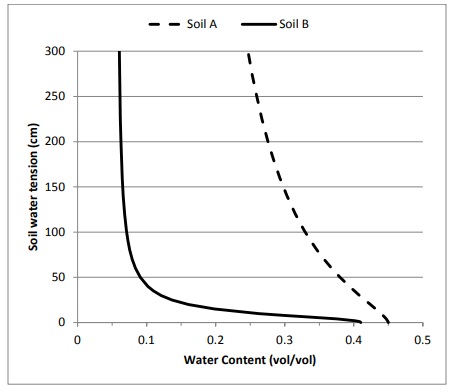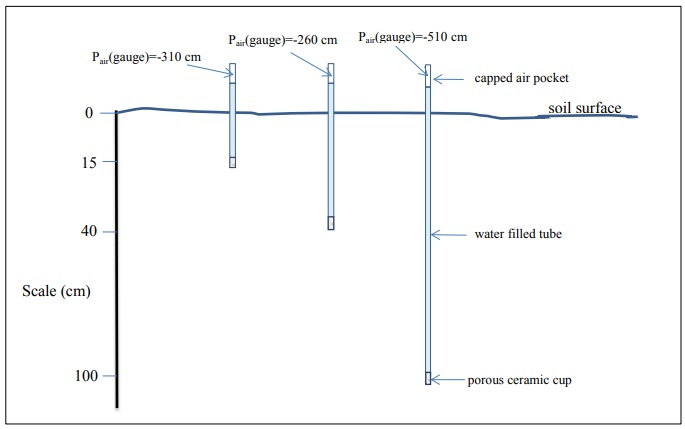Assignment:
Quantitative
1) A bucket (20 cm diameter by 10 cm depth) contains a loam soil with a particle density of 2.7 g/cm3 and a porosity of 40%. The soil is at a volumetric water content of 0.10. If the bucket receives 2.0 cm of rainfall,
a. Determine the soil water content after the rainfall (you may assume that the rainfall mixes uniformly throughout the soil volume).
b. Determine the weight of the bucket of soil after the rainfall (you may disregard the weight of the empty bucket).
2) A cylinder (4 cm diameter by 10 cm long) contains 210.0 g of oven-dry mineral soil. Estimate the grams of water required to fully saturate the soil in the cylinder.
3) Suppose a layer of soil (20 cm thick, overlying impermeable bedrock) has a known θ(h) relationship
??(h) = 0.46 (-5/h)0.25
If the soil is initially at h= -1000 cm, how much rainfall would be required to increase h to -100 cm throughout the soil layer? (You may assume that the added water is mixed uniformly throughout the 20 cm layer and that there is no evaporation or drainage losses.)
4) Two soil samples, A and B, are placed next to each other with good contact. Soil A is at θ=0.28, while soil B is at θ= 0.15. The soil water characteristic curve for each soil is

a. Will soil water move from one soil to the other? If so, which sample will lose water? Briefly explain.
b. Which soil would you argue has the narrower distribution of pore sizes and why?
5) Suppose you have a homogeneous soil sample with a volume of 100 cm3 and a known moisture retention function (for h<-8 cm),
θ(h) = 0.48(-8/h)0.15
If the average matric potential of the sample is -2170 cm,
a. What is the water content of the sample?
b. How much water would you need to add to the soil sample (assuming the water is mixed uniformly with the soil) in order to increase the matric potential to -100 cm?
c. What is the physical interpretation of the -8 cm in the moisture retention function?
6) a. What do you need to know in order to determine the direction of water flow between two points?
b. The matric potential (or water pressure) is measured at three soil depths. Use the data in the following table to determine the direction of water flow between depths 1 and 2 and depths 2 and
Soil depth (cm) soil texture h or p(cm) Pair (atm)
100 sandy loam -400 1
300 clay loam -80 1
400 loamy sand +5 1
7) A field soil is instrumented with tensiometers at three depths as shown below. You wish to know the direction of water flow (up or down) in the soil between the measurement depths.

a. Describe (without a calculation) how you would use the information in the diagram to assess the direction of water flow.
b. Now use the data provided in the figure in a calculation to determine the direction of water flow in the soil between 15 to 40 cm depth and in the soil between 40 to 100 cm depth.